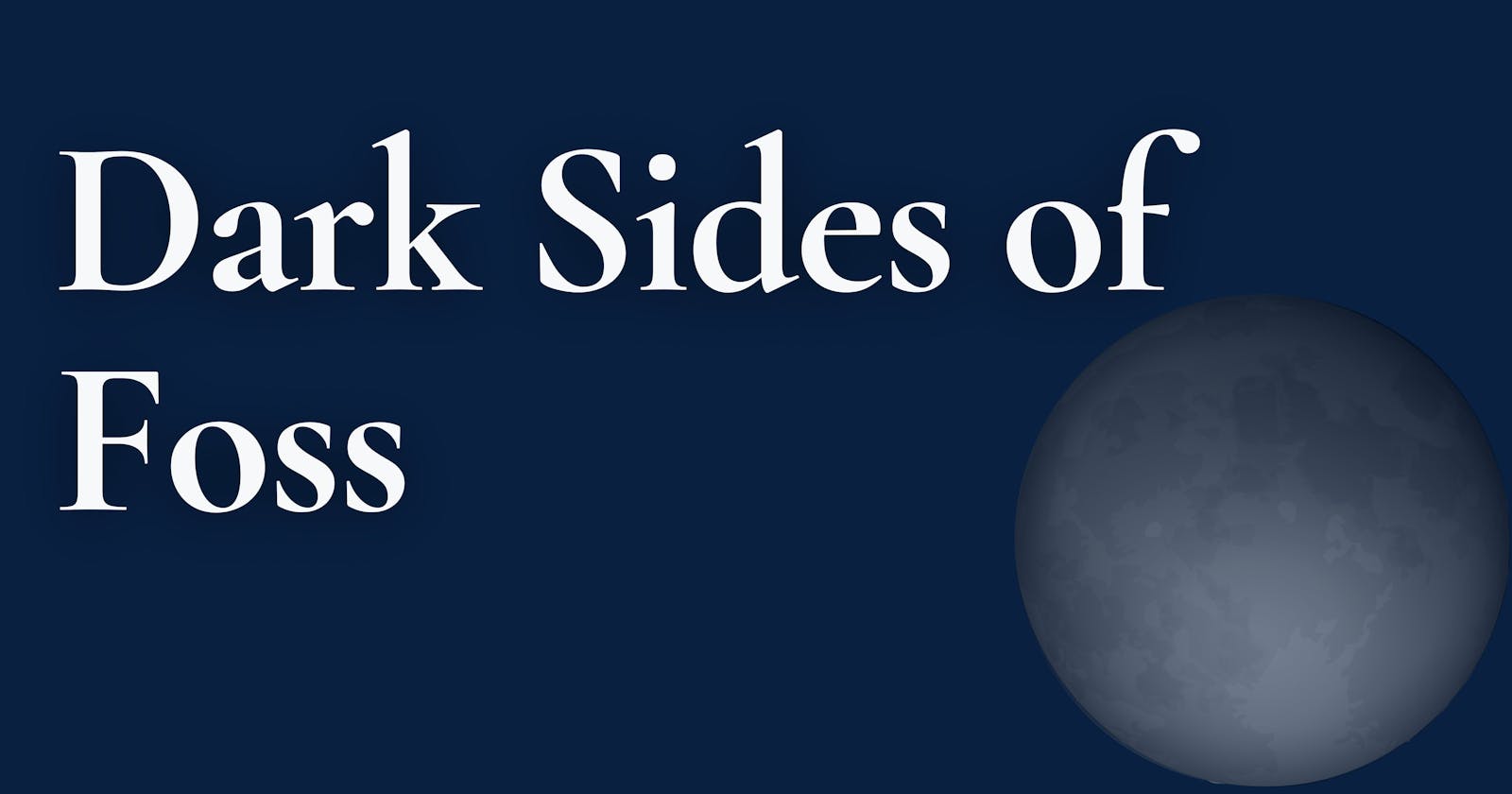In this blog, based on Ayush's talk at FOSS United Forum in Bangalore, and as recorded also in this podcast, we delve into the world of free and open-source software (FOSS) and shed light on the potential dark side it presents. While FOSS has revolutionized the software industry, it also brings forth ethical dilemmas and conflicts that demand careful consideration. This is part of a two blog series, and the next blog explores possible solutions for the ecosystem and also the thought behind Godspeed's Source Available Equitable Access approach.
Who decides what is FOSS?
FOSS is governed by two main organizations, the Free Software Foundation (FSF) and the Open Source Initiative (OSI). It embraces the principles of sharing and allows anyone to use the software for any purpose without restrictions or discrimination. The term “free” refers to freedom, not necessarily monetary cost. FOSS projects use licenses recognized by FSF and OSI, which define the terms of usage and distribution. Some licenses, like copyleft licenses, require that any modifications to the software be released as open-source, while others, like copyright licenses, do not impose such restrictions.
The Impact of FOSS
FOSS has had a profound impact on the software industry, enabling collaboration and innovation. It empowers developers, fosters a spirit of sharing, and accelerates the development process by leveraging existing open-source components. Businesses often adopt FOSS as a strategic move to gain brand exposure and leverage the collective effort of the open-source community. The joy of sharing and the collective contributions of developers and maintainers form the backbone of successful FOSS projects.
The dark sides of FOSS
While FOSS brings numerous benefits, it also raises concerns and challenges that need to be addressed.
No restriction on ethical usage
One significant dark side is the lack of restrictions on the usage of FOSS. Although FOSS is not inherently dark, it can be utilized for unethical or harmful purposes such as fraud or warfare. This absence of checks and balances raises ethical questions regarding the responsible and accountable usage of FOSS.

Double clicking on the community bit
Furthermore, the sense of community within the FOSS ecosystem is often lacking. Although platforms like GitHub host a vast number of developers, only a small fraction actively contribute, while others remain passive consumers. Github states that out of 10000 developrs only 6 give back to FOSS. The idea of a unified community is called into question. Is it truly a community when only a few actively participate in the development and improvement of FOSS projects? The majority of users remain passive consumers, contributing to a sense of disconnection and raising doubts about whether the term “community” accurately represents the collaborative spirit of FOSS.
Problems with the open core model
On another hand, the open core model, where developers release a free version of their software and later introduce a paid Enterprise version, is inherently rooted in conflict. While the open-source community desires the perpetuity and growth of the free version, developers aim to monetize their efforts. This conflict leads to a love gone bad, where early adopters may feel compelled to switch to the paid version, and developers find themselves torn between the need to survive and the expectations of the community. This transition often leads to conflicts between developers seeking financial sustainability and users who question paying for a product they helped popularize. The initial rosy relationship between developers and users becomes tainted with conflict.
Parasitical abuse of FOSS
Another challenge within the open core model is parasitical abuse. Competing companies utilize the original software to offer similar services, essentially profiting from the creator’s work. This exploitation creates a competitive predicament, as developers find themselves competing against entities that leverage their own creations. Profitability is vital for the sustainability and growth of FOSS projects. It enables teams to expand, invest in research and development, and provide ongoing support. However, many open core companies struggle to generate sufficient profits. This lack of profitability undermines the long-term success of FOSS, affecting its ability to thrive and hindering the ecosystem’s overall progress.

Sustainability of FOSS maintainers
In the face of these challenges, developers often find themselves seeking support through donations or other means. However, this raises questions about fairness. With millions of businesses utilizing FOSS to generate billions of dollars in revenue, it may seem imbalanced for developers to rely on donations. Developers, who have contributed significantly to the success of these businesses, face the dilemma of how to sustain their work and fund further development.
Conclusion
To mitigate the dark side of FOSS, the community needs to engage in open dialogue and explore alternative models. Balancing the desire for free software with the financial sustainability of developers is crucial. Collaboration between developers, businesses, and the open-source community can help establish fair practices and revenue-sharing mechanisms that ensure the continued growth and innovation of FOSS.
While free and open-source software has revolutionized the software industry and fostered collaboration on an unprecedented scale, it is important to acknowledge and address its potential dark side. The conflicts within the open core model, the issue of parasitical abuse, and the challenges surrounding profitability all require careful consideration. By fostering a sense of community, encouraging open dialogue, and exploring alternative models, we can work towards a future where FOSS thrives while respecting the contributions and needs of all stakeholders involved. Through collective efforts, we can navigate the dark side of FOSS and unlock its true potential as a force for positive change in the software industry and beyond.
Hope: From free to fair
In this video Ayush talks about the pains mentioned above, but also the possible solutions that the community can explore.
Do check out the next blog: FOSS from Free to Fair, where we'll delve deeper into the evolving landscape of free and open-source software.
